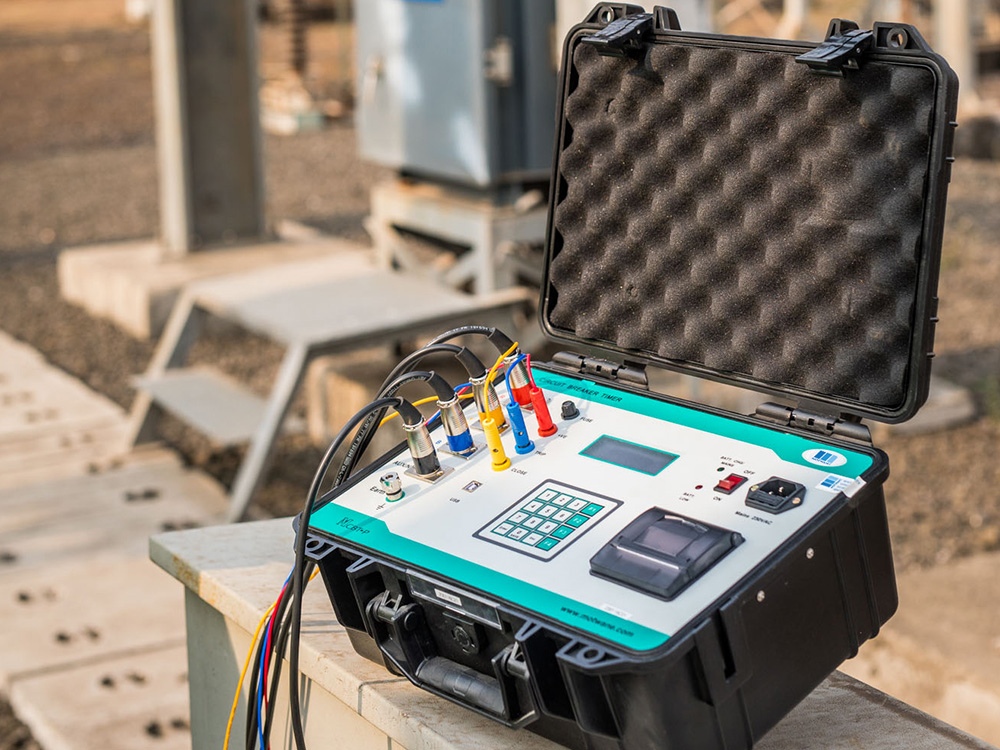
Timing tests are used to determine the time for open (trip), close, close-open, and reclosing operations.
These times are essential for the safe and reliable circuit breaker operation and, therefore, the result of a proper circuit breaker design. The main contact times are checked after production, commissioning, and in-service during periodic maintenance. To do so, the timing test devices have to be connected to the coils and to the main contacts.
Standards define the operation time as the time from energizing the coil until the main contacts are opened or closed. A regular timing test device supplies a voltage to the coils and uses an internal clock to measure the time until the main contact state has changed. To detect that state change, basically 2 methods are usually used:
- Voltage divider method; Measures voltage change
- Resistance threshold method; Measures resistance change
These methods are not applicable when both sides of the circuit breaker are grounded, because the signal change is not detectable.
Alternative test methods available:
- Dynamic capacitance measurement(DCM)
- Current sensor measurement(CSM)
